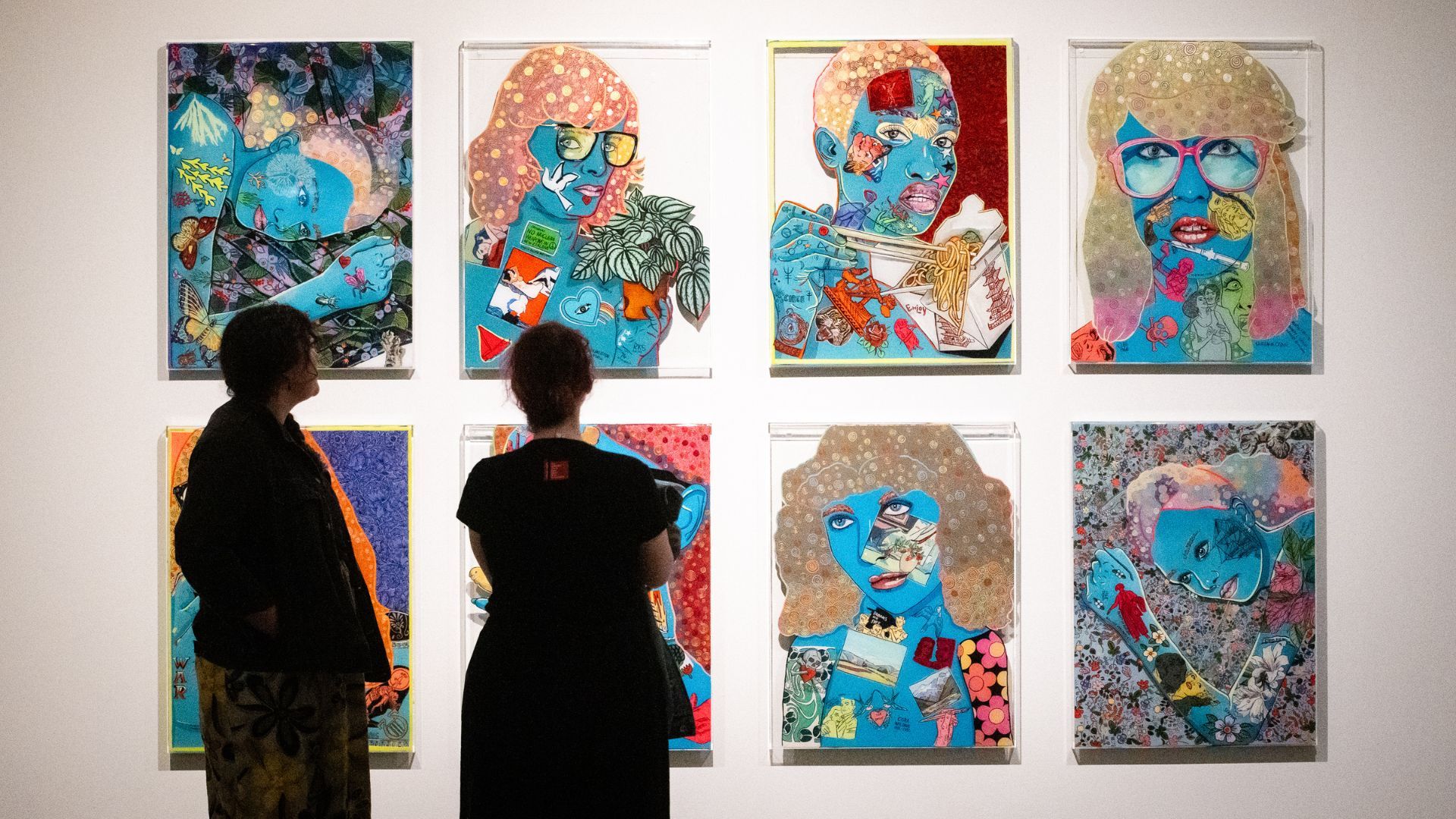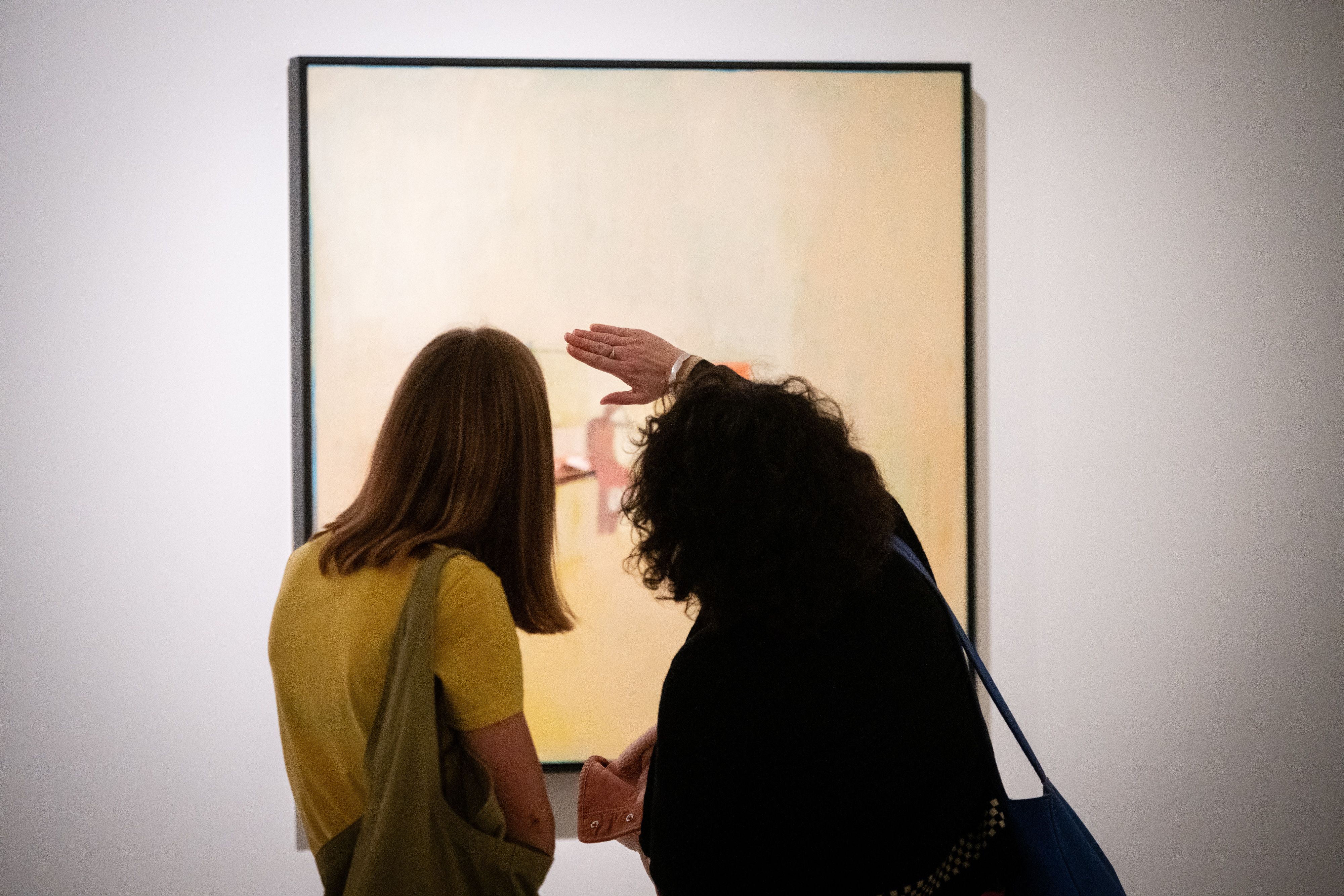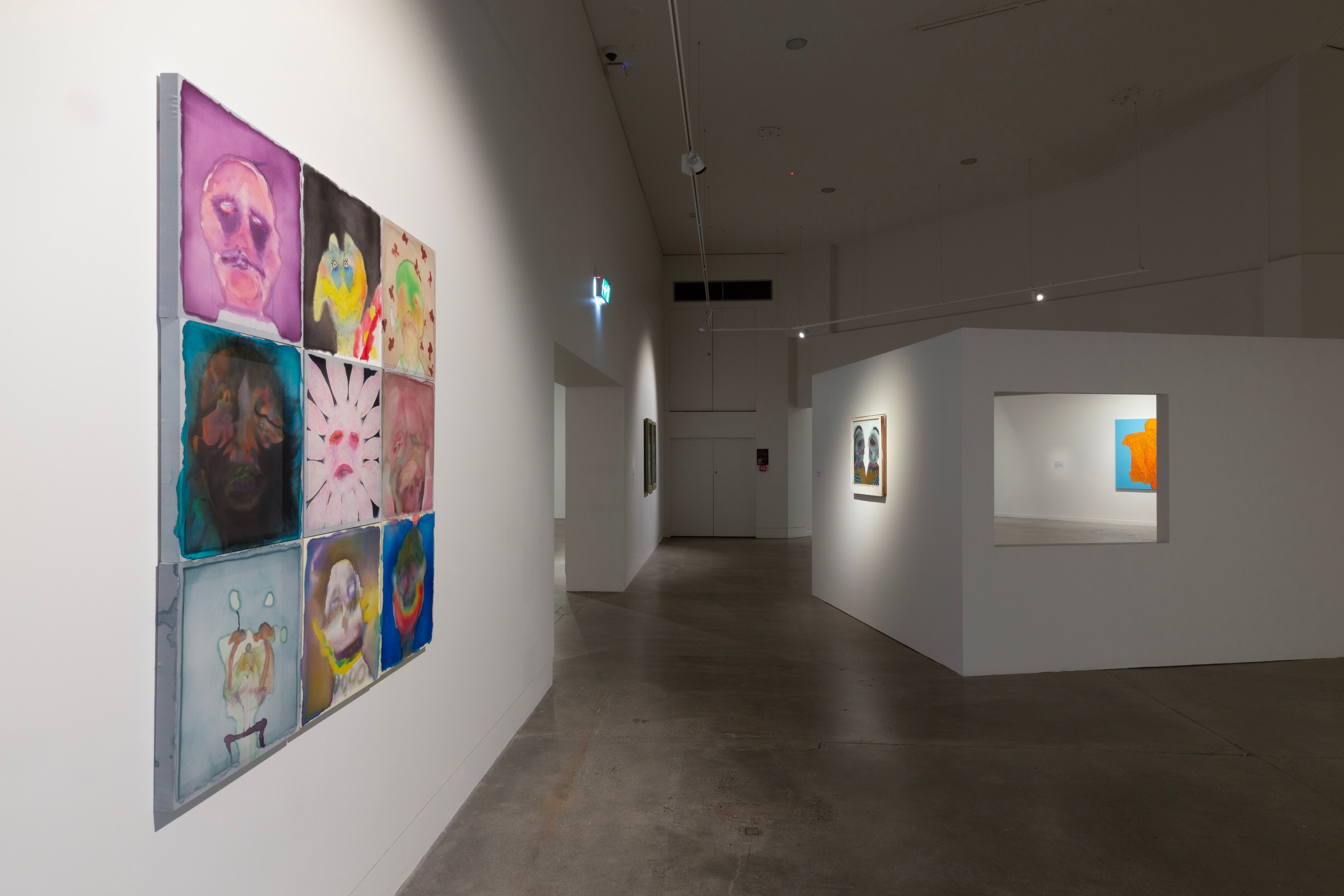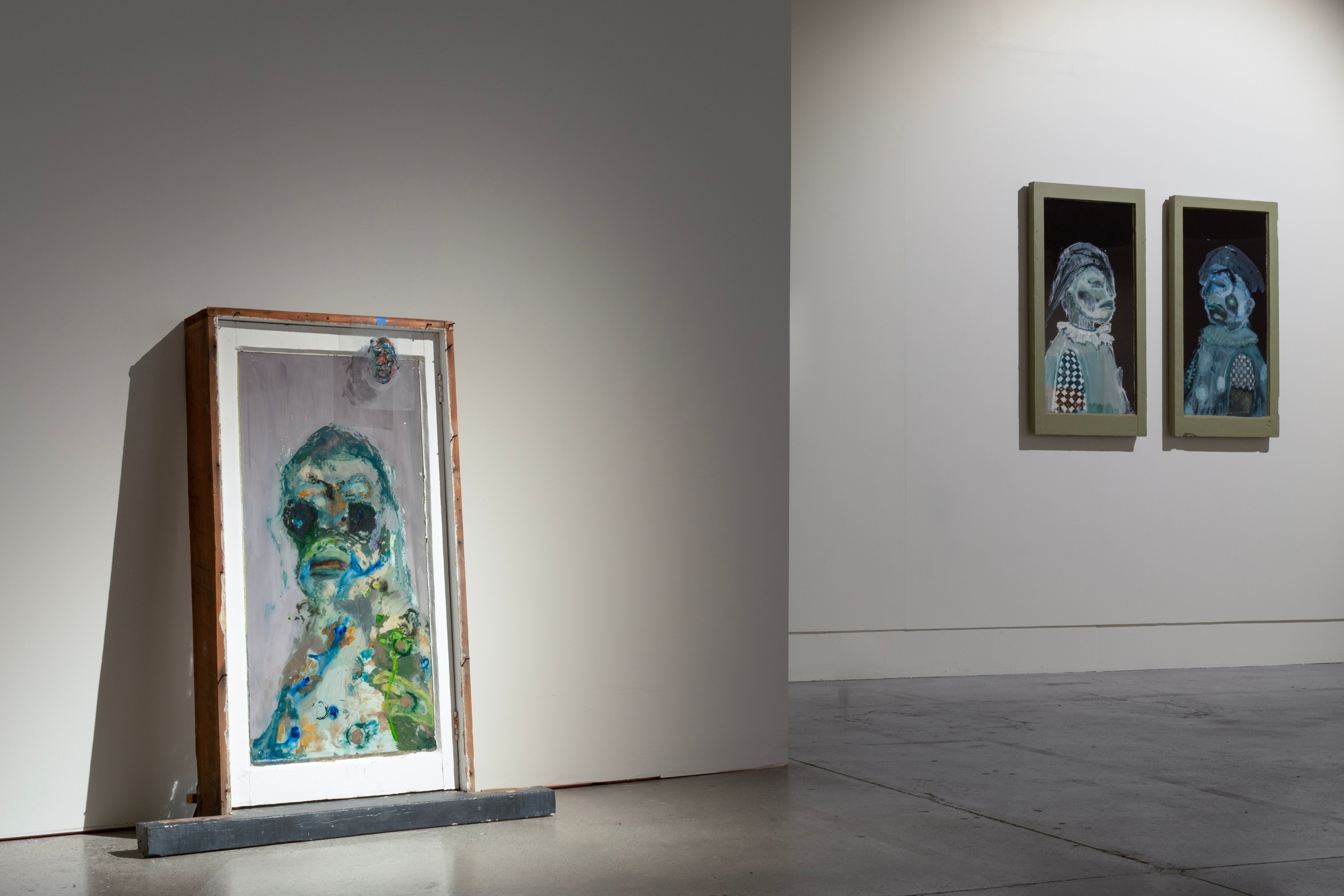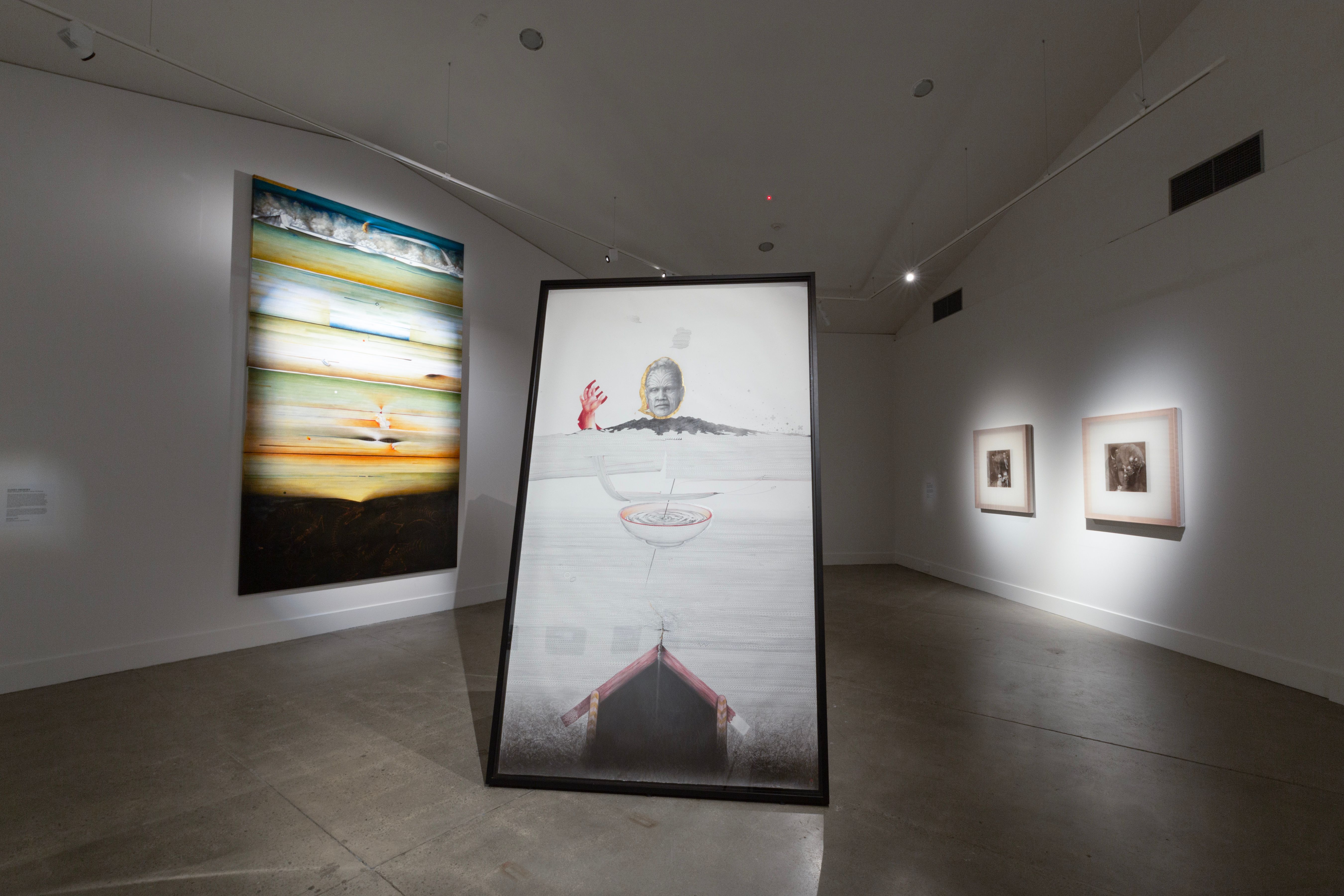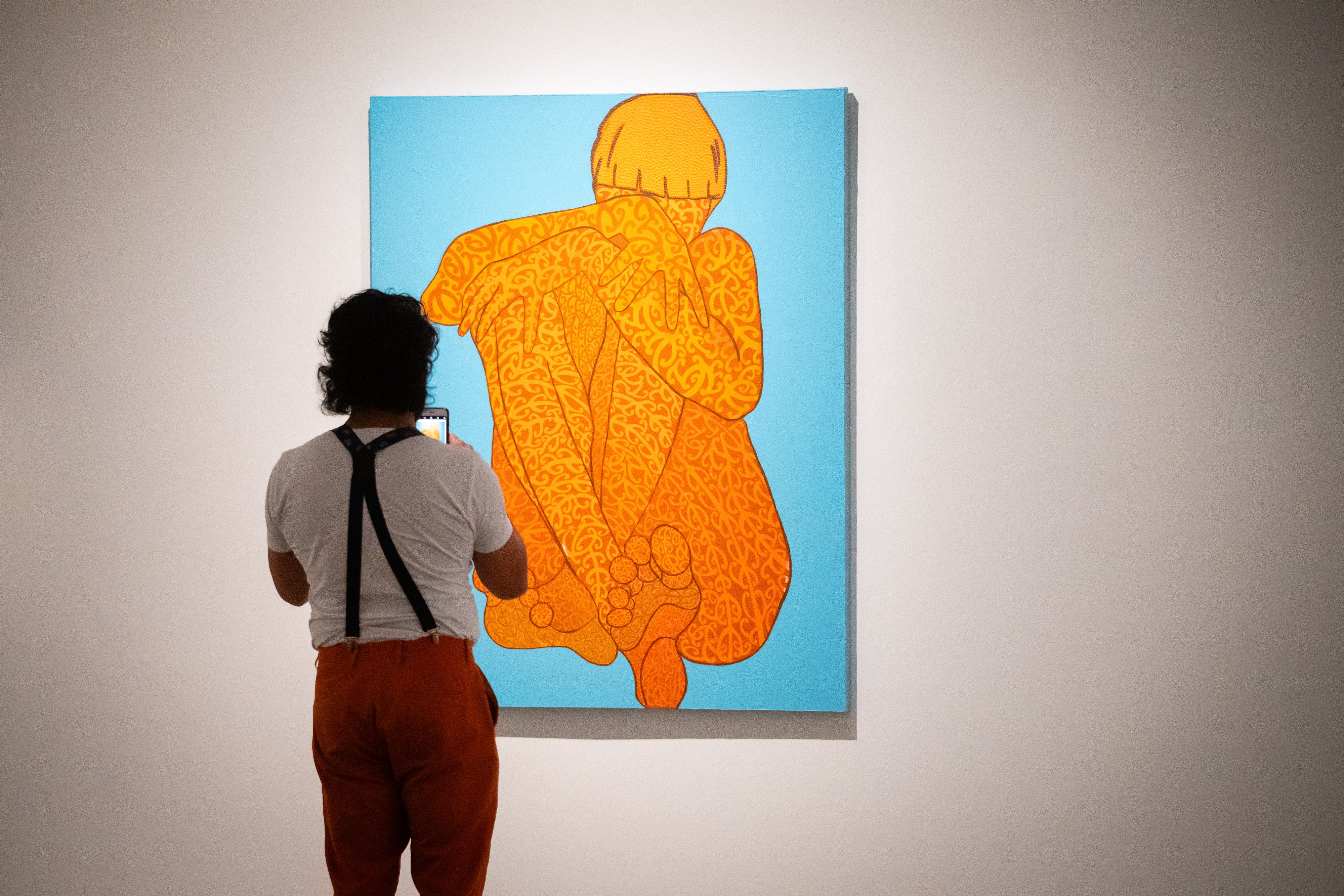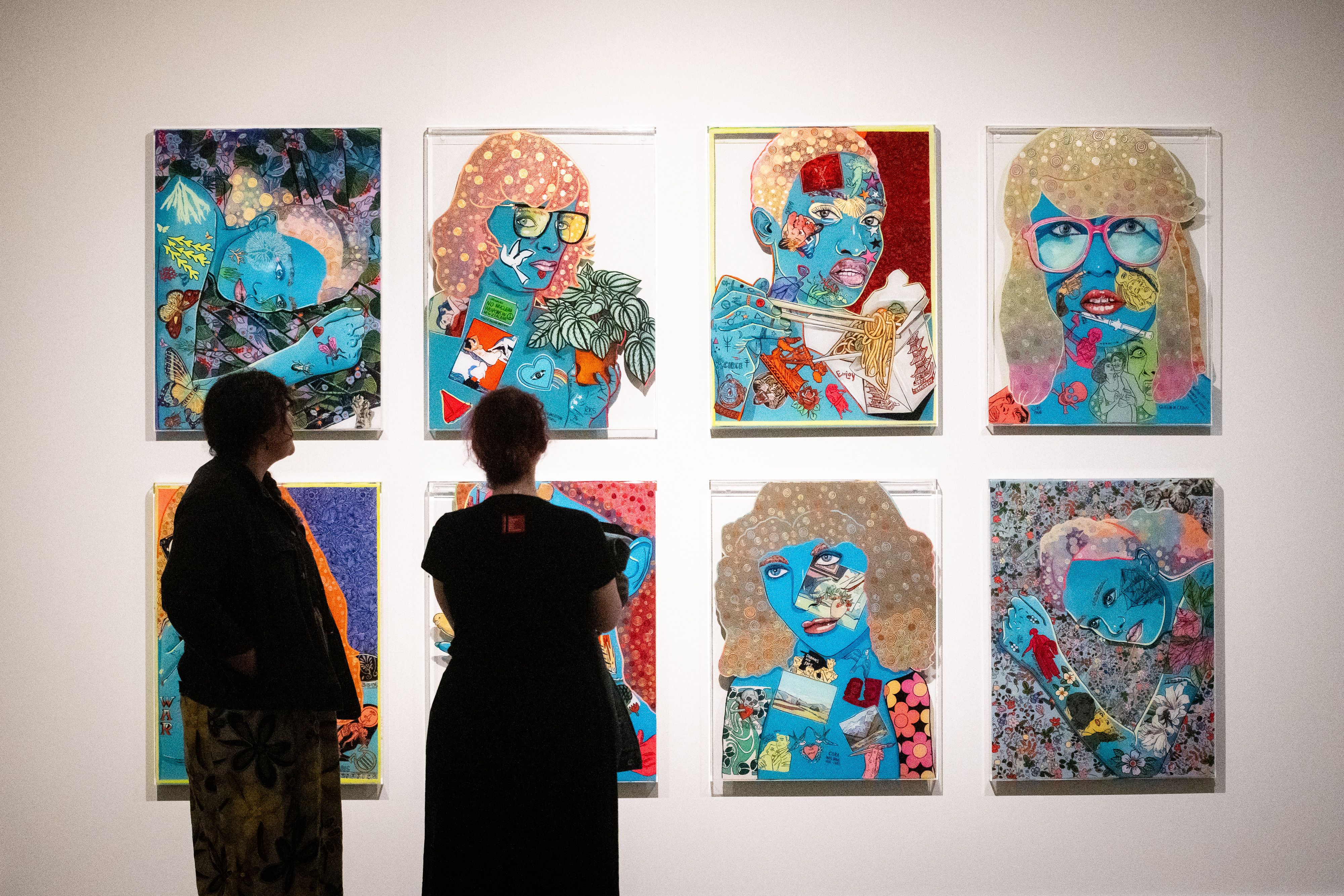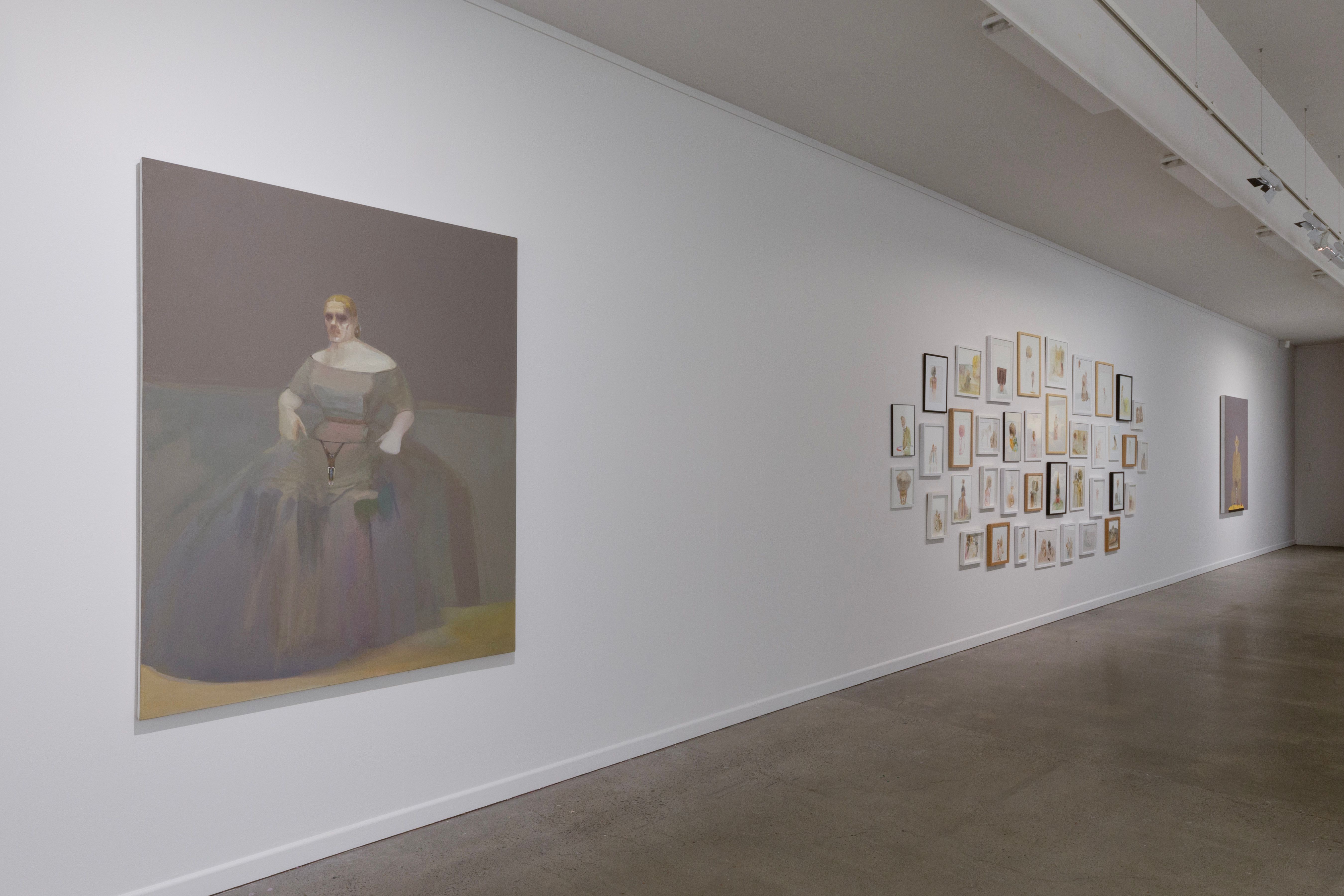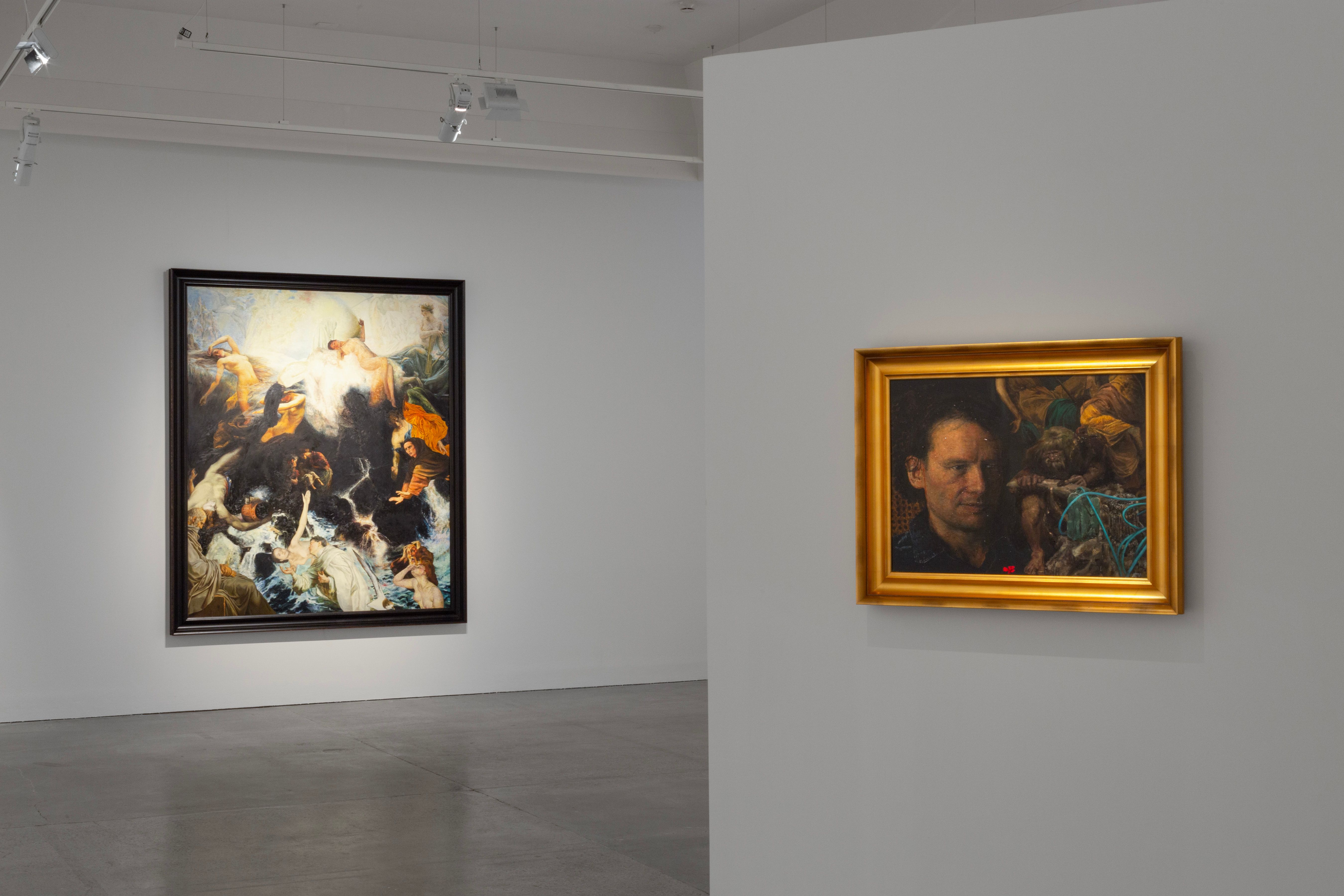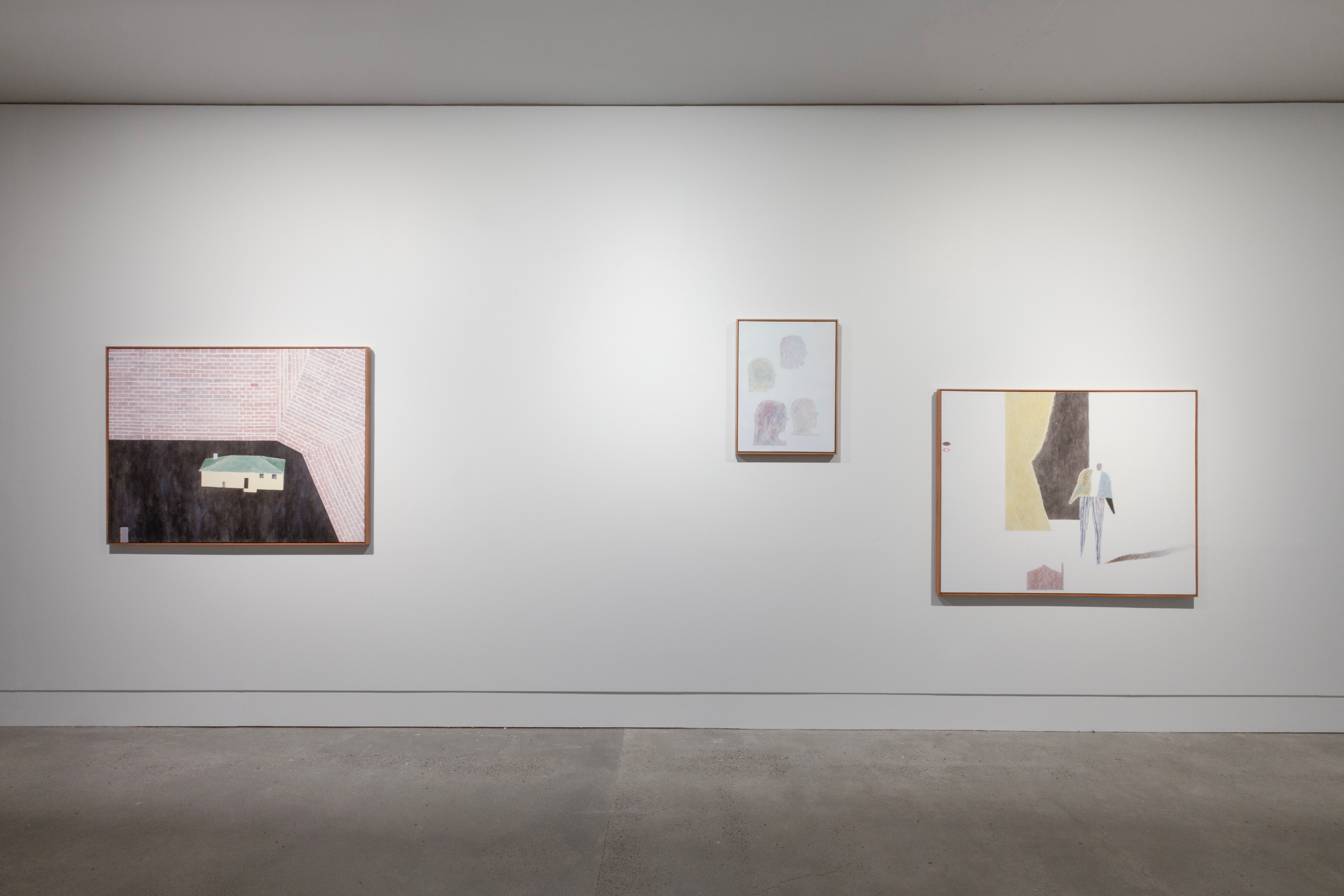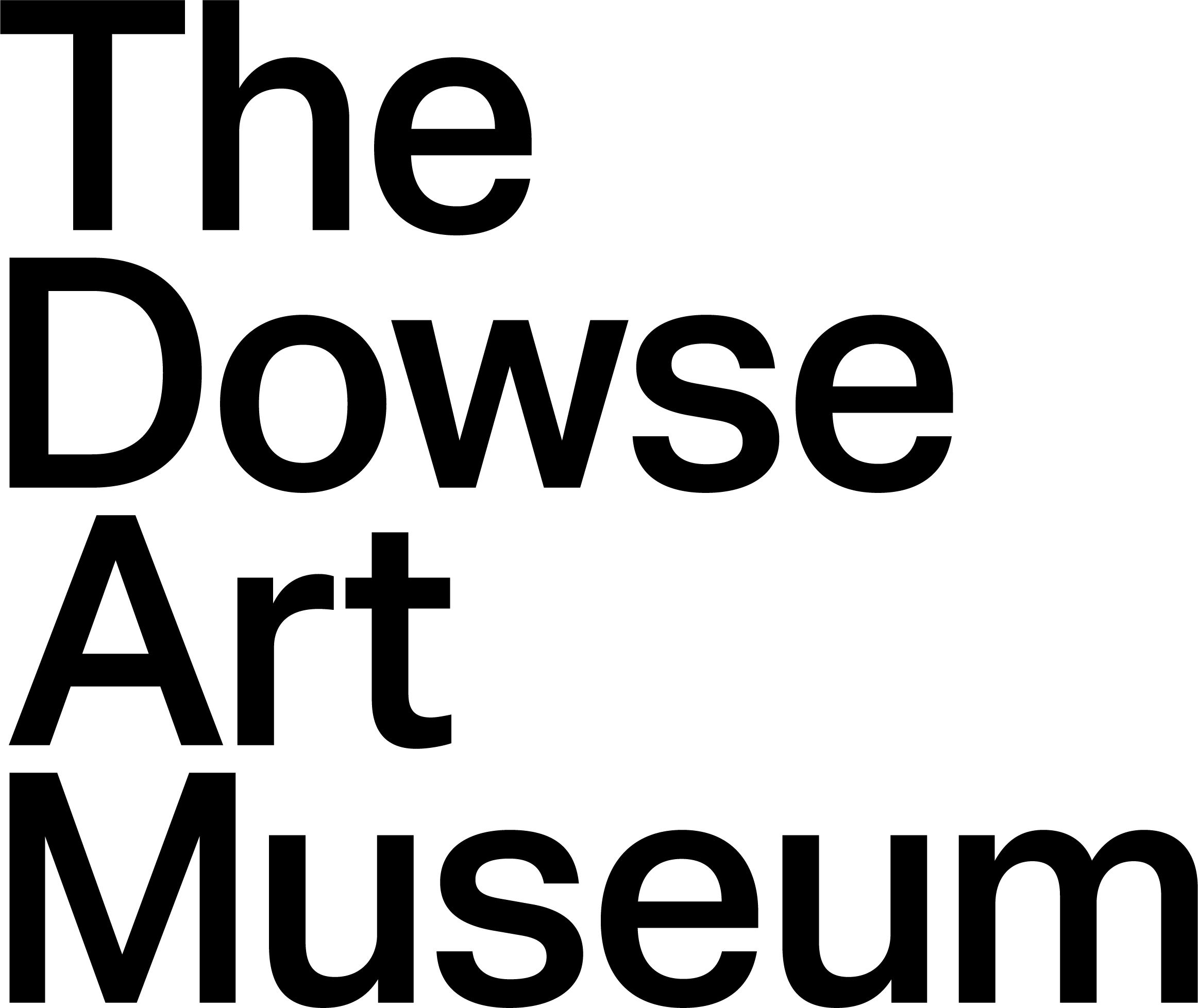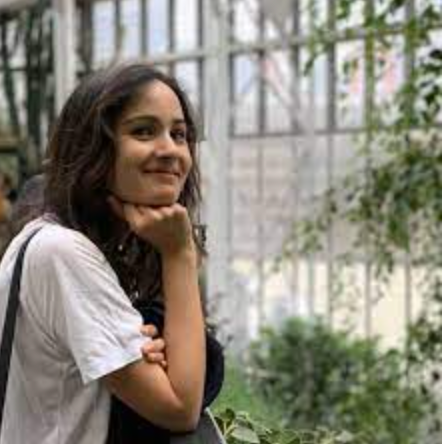The Return
Are they giants, or are we? Millie Riddell pays a visit to our 'Strange Friends' at The Dowse Art Museum: a familiar, odd, reflective and imaginative exhibition collating ten artists to explore the idea of the painted figure.
I Surface
Before the lockdowns, before the border closures, before the money dried up, I only worried about going to the pool. Google assured me that chlorine would kill the virus, that I was in no danger while I was actually in the pool – though stopping for too long at the end of a length should be avoided. What I really had to fear, my searches told me, were the changing rooms. The damp communal surfaces, the enclosed, unventilated space, and the potential proximity to strange, infected bodies.
It was an exercise in a ghost-like existence – change quickly, touch nothing if you can help it, hold your breath in. Try to exist in an environment without really being there. The memory of making myself small in those furtive changing rooms lay dormant until I came across Kate Small’s paintings in The Dowse’s portrait show, Strange Friends. Featuring ten different artists and over 100 works; everything from whakapapa to cartoonish nightmares, from classical allegory to ordinary domestic routines is smuggled in through the guise of a traditional portrait show.
Strange Friends, installation view, 2023, The Dowse Art Museum. Images: Cheska Brown and Mark Tantrum photography
It is this last category – the domestic – that Masterton artist Small works with, those ordinary mundane activities paused for a moment for the viewer’s contemplation. Small’s figures inhabit spaces identifiable only at a guess, a few environmental clues rising to the surface out of the shimmering background – a row of sinks, a ceiling light, washing hanging on a line, the merest suggestion of a mirror. Like something out of a dream, surroundings fade into a void, despite the implication of an intimate, enclosed space. Their existence is rendered only through proximity to Small’s figures, sharpening the closer they get – a Midas touch for existence. Naturally, we’re drawn first to the figure – it’s a portrait show, after all – and we piece together her surroundings as a secondary concern. Everything radiates outward from her, “a shimmering miasmic dreamscape that hovers between the real and the imagination”, the wall text tells us.
I’m unsure whether Small’s figures want to be looked at or not. The wall text also tells me that the work is about the often overlooked, mundane moments in our lives and our surroundings: the chlorine-scented changing rooms before laps in the public pool, the satisfying feeling of washing hung on a line. This suggests we are about to interrupt the subject in some private act, a voyeuristic intrusion into those in-between moments. But Small’s figures seem to be waiting for us. Their stances are both provocative and guarded, in some cases posing languidly, classically, open and suggestive to the viewer; in others they are more apprehensive – an arm crossed over the body, wrapping the figure away from the audience, a head turned away. They are alone, except for a series of smaller works with two figures (Kaitawa Road, Latham Road, Waitohu Road, Cushla Street and Ngaio Street, 2020–21). At first glance the figures seem disconnected, almost but not quite touching, sharing space and nothing else. I am reminded of Lucian Freud’s disquieting family portrait, Large Interior, W11 (After Watteau) (1981–83), with the figures occupying their own interior worlds despite their close proximity. At second glance, though, the figures seem united in their shared apprehension of the viewer – their direct gaze suggests intrusion, suggests that the disconnect might not be happening within the painting, but in front of it.
Strange Friends, installation view, 2023, The Dowse Art Museum. Images: Cheska Brown and Mark Tantrum photography
Strange Friends is as much about the act of looking as it is about the subjects being looked at – we oscillate between voyeurism and that feeling of treading on private moments. The monumental collection of works shares a destabilising quality, calling into question the relationship of viewer to subject and, in many cases, flipping the expected order of those two roles. The tone is set with Hannah Ireland’s new works on silk – a grid of nine faces, distorted, smeared, each encased in their own square – like a Brady Bunch of nightmares.
The wall text describes this arrangement as something “like the Instagram grid we have become so familiar with”, evoking the constructed ideal self in the social media age. But the set reminds me less of an Instagram grid and more of a red-light district. Ireland’s faces seem offered up for consumption in a horror-comedy that illuminates the close relation between the grotesque and the beautiful, the deception of selfhood enhanced by the transparency of the silk it is painted on. A monster with enviably curled eyelashes, a face framed in a crowd of petals, a watermelon grin that cheerfully obscures all other features.
It seems less about the construction of the self than it does about the inescapability of the self. Stuck in a Pattern (2023) sums it up with the dynamism of swaying forms suspended in time, a scene within a scene. For all their monstrous, fantastical features and compelling minor details, it is the expressions of Ireland’s faces that are the most compelling – pitiable, tragic, the grid of windows (or Instagram, however you look at it) freezing the figures in a moment of anguish.
Ireland’s faces seem offered up for consumption in a horror-comedy that illuminates the close relation between the grotesque and the beautiful
II Frame
History is inescapable in a portrait show. The genre is so loaded, so thoroughly revised that to wade into it anchors you inescapably to its lineage. Yet there is still space for the unexpected, for a reversal of fortune. In Ursula Bradley’s works, lush forests stretch and threaten to break out of their frames, a bouquet of flowers bursts from a TV screen, blue light from a laptop illuminates the space, and sublime renderings of the heavens are reflected through the upper windows of 666 Dominion Road. These are almost post-human portraits, imagining a world beyond the human-centred, where urban landscapes and domestic settings are treated with as much vibrancy and care as the natural world, where light can no longer be contained.
Frames are as much the subject as the depictions within them, particularly in Ireland’s earlier works: sullen clowns (Wasting Time, Just a Little Bit and More Space to Ourselves, both 2021) and a creature that both blends in with and wears the natural world (Back Wash, 2019). These works are a reversal of the usual process, not only through application of paint (the background is built up last, after the figures in the foreground), but in the matter of framing. Painted on found windows, the works function less like a lens to view a depicted scene, and more like an obscured portal – a frame filled in retrospect with a figure, transparent glass made opaque by Ireland’s subjects.
Strange Friends, installation view, 2023, The Dowse Art Museum. Images: Cheska Brown and Mark Tantrum photography
Ireland’s works are as much about the physicality of the painting as they are about the figures depicted, a sculptural quality shared with the works by James Ormsby and John Ward Knox. Time is tangible, visible in both artists’ works, with the complexities of representation and narrative laid bare. Ward Knox’s Forum, Forum I (2023) and Forum, Forum II (2023) are, at first glance, images of besuited 1960s politicians, resolutely unaware they are being haunted by the eerie, classically sculpted head of a young girl. Only the viewer is complicit, triggering the appearance of the second layered image as you move back and forth across the works. As the wall text explains, painted lightly on dual-layered silk, the pigment used by Ward Knox absorbs light and heightens the three-dimensionality of the image – a trick of the light that “offers a different perspective from every angle”.
In the same room, layers of history are similarly inescapable in Ormsby’s work. Through a unique visual vocabulary that draws on symbolism from the artist’s Scottish and Māori ancestry, Ormsby’s monumental works interweave figure and whenua through meticulous drawings that speak to the deep historical complexities of representation. The whole history of time, of being, feels present in the Matawai triptych (2023), a cosmological epic of geological ruptures, tiny balls of fire, bones beneath the earth, and the heavens above – a self-portrait of the artist at a monumental scale.
Strange Friends, installation view, 2023, The Dowse Art Museum. Images: Cheska Brown and Mark Tantrum photography
Nephi Tupaea similarly converses with her own ancestors, with the complexities of contemporary identity and the legacies of the colonial gaze. The bright canvas of Golden Queen (2023) – a self-portrait bursting out of its own frame – is the first work in the exhibition to greet the viewer, thanks to a strategically placed window in a temporary wall. The siren call of that first shock of orange and blue lingers as you move through the exhibition, making your way to Tupaea’s works. Directly recalling Paul Gauguin’s Pastoral in Martinique (1889), Tupaea’s The Book (2023) adds to that ever-evolving conversation between Moana artists and the French post-impressionist. In the original Gauguin, figures contemplate a cultivated land, as fragmented as the two figures are to one another – they stand detached, separate, gazing out over carefully delineated blocks of fenced land. Tupaea’s work follows Gauguin’s composition, but the separation of figure and landscape, the dominance of man over nature, is nowhere to be seen. Tupaea’s landscape emerges out of interlocking kōwhaiwhai motifs, the figures wrap around one another – not individual overseers but a merging of forms, on equal par with the landscape and the spiritual realm. Referencing four generations of Mormonism, the figures in The Book seem poised on the precipice of the spirit realm; three dogs, representing kaitiaki, are ready to guide the figures – and maybe the viewer – through this visionary veil.
Strange Friends, installation view, 2023, The Dowse Art Museum. Images: Cheska Brown and Mark Tantrum photography
Gauguin’s famous Te Arii Vahine (1896) is also reimagined here – this time as a self-portrait, the knowingly titled If the Shoe Fits (2023). This is Eve reimagined as Papatūānuku. If the Shoe Fits reclaims Gauguin’s model as the holder of the space, surrounded not by ‘exotic’ fruits and trees of Tahiti but by a landscape of kōwhaiwhai, a contemporary Ngāti Kahungunu design. All other figures from the original are removed – Gauguin’s Eve shared her space with two male figures in the background lurking among the trees, a woman picking fruit, and an immense four-legged creature. Tupaea’s Eve does not share her space, but fills the frame, at one with her surrounding landscape.
This is Eve reimagined as Papatūānuku.
III Subject
The title of the exhibition, Strange Friends, implies that we are to encounter unusual characters, oddballs and underclasses, a celebration of the overlooked subjects of traditional portraiture. The introductory text speaks to the familiar faces of strangers we come across every day, “neighbours you’ve never met, the cast of characters in old family photographs or the people you pass on the street”. However, the exhibition is is in fact much more introspective than the title suggests, offering portraiture as a genre of self-reflection, imagination and personal history. But still, the promise of a cabinet of curiosities is delivered in the final room. This is the most crowded, in the number of works and the cacophony of new characters introduced.
Sam Mitchell and Lorene Taurerewa offer a collection of smaller works that give us as much insight into the artists’ creative journeys and imaginations as they do the figures on display. Mitchell’s Mix ranges from 2009 to 2015, encompassing anything from the gaping maw of a shark, to eyeless cameos, haloed dog portraits, a litany of skulls and sinister housewives. It recalls, at first glance, the pages ripped from a Victorian collector’s private library – sketches of local birdlife, excerpts from anatomy journals. But on closer inspection, viewed individually, the works are not quite so singular in style or temporality – some works could be pages from comic books, others evoke a Lichtenstein-esque pop-art sensibility.
Strange Friends, installation view, 2023, The Dowse Art Museum. Images: Cheska Brown and Mark Tantrum photography
Further along, another set of smaller watercolour works serve a helpful entry point for the two large-scale works by Taurerewa (Monkey Swing, 2023, and Lonely Prairie, 2022–23 – both highlights of the exhibition). Produced as a form of visual diary over the years, these watercolours are described by the artist as the life-force of her practice. The titles are delightfully ordinary in a way that belies the magical painting on offer here: Yellow Bird, The Long Balloon, Big Dog. There is so much to take in: a Fuseli-like demon presents us with a mysterious caged creature, a monkey wears a chef’s hat and a clown stretches into the frame above, giving the entire arrangement a dynamic quality. Recurring motifs begin to crystallise – something is protruding from the mouths of Taurerewa’s figures – at first I think snake and then I think ribbon. We are in someone else’s dream here, where symbolism is outside of our control.
Strange Friends, installation view, 2023, The Dowse Art Museum. Images: Cheska Brown and Mark Tantrum photography
In this dreamscape, classical figures compete for the viewer’s attention in a deceptively familiar style – until closely inspected – in Andrew McLeod’s River and Self Portrait (2021). The normal language cues of the visual are defied with an eclecticism of perspectives and styles, at once classical, comical, biblical and pop. McLeod’s figures seem to occupy different narratives, different timelines, different worlds – yet somehow it works, a story takes shape and the myriad styles cohere. These revisions of the classical are explored through an entirely different lens in Mitchell’s series, in which familiar figures are reimagined through a fusion of the classical and almost contemporary: pin-up Cassandra eats pizza, Circe eats noodles (Cassandra and Circe, both 2022).
Strange Friends, installation view, 2023, The Dowse Art Museum. Images: Cheska Brown and Mark Tantrum photography
IV Space
Orpheus journeys to the underworld to retrieve his beloved Eurydice in Alan Ibell’s Vision of a Depleted Spring (2023). In this version, alienation and distance dominate the surface of the work, competing for space among the Grecian vases hovering in the foreground and the lone, distinctive figure entering the frame. I’ve always liked Alan Ibell’s titles. Like the vast untouched spaces of his canvases, they leave room for the imagination – snippets of a fairy tale, a riddle to be unpacked by the viewer. It is an invitation to complete the wider story and to fill in the gaps of past and present. In Audience I (2023), floating, statuesque heads observe something out of frame, turning the focus to the audience, just as we are observed from the branches of an enchanted forest in View from a Window III (2021). They are as detached from one another as the object relations in Ibell’s other works: a figure comes to an abrupt halt before an egg-shaped portal, a momentary light shines in the darkness in The Mine (2023); brick walls unfold like a pop-up book in House at Night (2021).
Strange Friends, installation view, 2023, The Dowse Art Museum. Images: Cheska Brown and Mark Tantrum photography
Are they giants, or are we? Nothing is certain, Ibell’s works destabilise the audience’s relationship to the work, reminding us of the duplicities of representation and our own imaginative complicity in the scenes he sets. As in Taurerewa’s Lonely Prairie, creation mythologies are laid bare, the figures and scenes depicted to be contemplated at a remove. Strange Friends reminds us of the futility of controlled creation. When self, meaning, representation and reality are never fixed but always in motion, nothing is certain, least of all the painted figure.
The show is not a definitive statement on the figure in contemporary Aotearoa art, but rather another voice in an ever-evolving conversation. For a genre steeped in history, memory, rules and critique to emerge out of fragmented perspectives as a singular entity would be impossible, but the show evokes portraiture’s endless possibilities. Strange Friends reminds us that reflections of ourselves, of the familiar, often spark the greatest imaginings.
This piece is presented in partnership with The Dowse Art Museum. They cover the costs of paying our writers while we retain all editorial control.
Feature Image: Strange Friends, installation view, 2023.
Cheska Brown and Mark Tantrum photography
